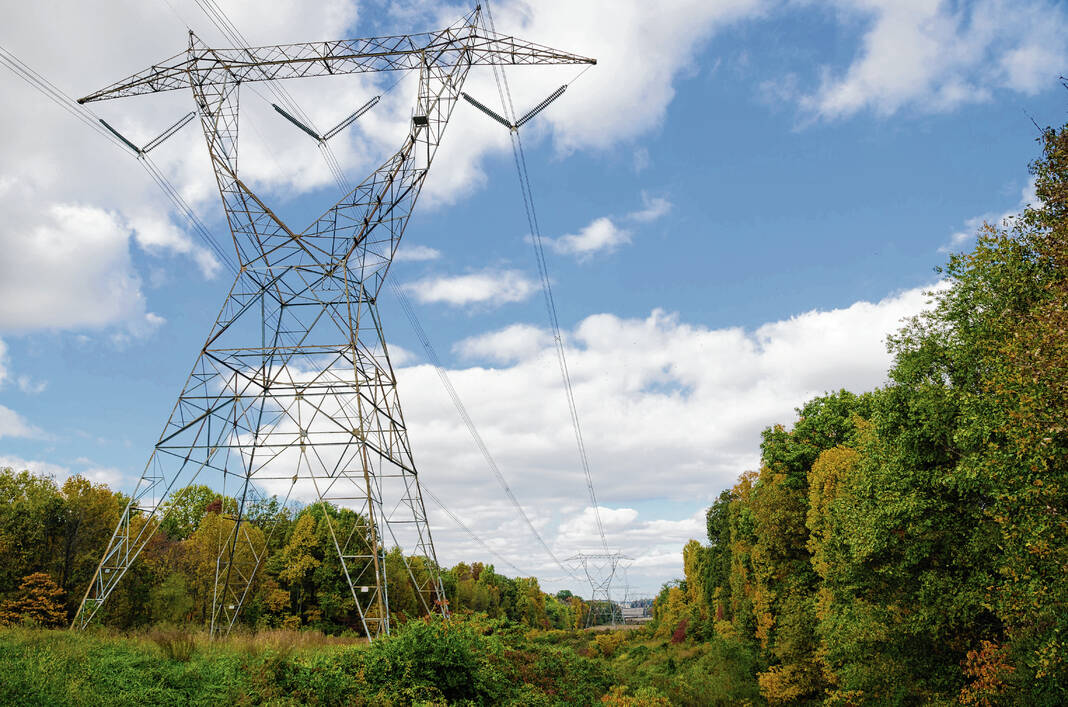
A high-voltage transmission tower is seen in a field near Edwardsport. Towers like these are present across Duke Energy service territories, including Jackson County.
Submitted photo

Duke Energy’s Indiana regional headquarters is seen in Plainfield.
Submitted photo
One of Jackson County’s largest utilities is seeking regulatory approval to raise its rates through the summer due to rising fuel costs.
Late last month, Plainfield-based Duke Energy Indiana filed an application with the Indiana Utility Regulatory Commission for approval of rate changes for its electric and steam services due to fuel costs. If approved by regulators, the new rates would take effect in July and remain in effect through September.
Duke Energy’s service area in Jackson County includes Brownstown, Crothersville, Medora and Seymour.
In the filings, Duke Energy announced its intent to increase its current electric rates for residential by 16%, or an increase of 24.6% from what customers paid from July to September 2021. For commercial customers, the rates will increase by less than 20.3% and for industrial customers, the rate will increase by less than 25.7%.
A residential customer with a bill of $141.20 right now would see it go up by $22.59, and a customer who had a bill of $131.40 last August would see it increase by $32.39, according to filings.
If approved by regulators, the new rates would take effect in July and remain in effect through September.
In testimony filed with the application, the utility said the increase was needed due to volatility in fuel markets. The utility has experienced a significant and prolonged rise in coal, natural gas and wholesale power prices between when the projections were made and when the rates go into effect, filings say.
“We are seeing the highest sustained prices for fuel that we have witnessed in a decade,” said Angeline Protogere, a Duke Energy spokesperson.
Utility representatives also said in filings that constraints from high gas prices, coal supply and fossil fuel transportation have significantly affected how Duke Energy operates its fossil fuel thermal plants and how the utility purchases energy and fuel in the marketplace.
“Duke Energy Indiana has made every reasonable effort to acquire fuel and generate or purchase power or both so as to provide electricity to its retail customers at the lowest fuel cost reasonably possible,” the filing says.
Since mid-2021, the electric utility has seen costs for coal and gas increase significantly. Fuel purchases account for a significant portion of Duke Energy’s electric costs, averaging as high as 30% of a total bill, Duke Energy Indiana President Stan Pinegar said in a statement shared with media outlets across the state.
“That’s why when there are volatile energy markets, it can have a big impact,” Pinegar said.
The markets are being affected by a variety of factors. Along with global demand and tight fuel supplies, the markets have been affected by labor shortages at coal mines and railroads. These issues are affecting the cost of the power the company both produces and purchases in energy markets, he said.
There also is the matter of supply chain challenges.
“We also have been working to overcome supply chain challenges to ensure we have sufficient supplies of fuel available for summer and winter — the times of highest electric demand,” Pinegar said.
While the rates have gone up, company officials say the increases are not permanent. Fuel costs rise and fall, and Duke Energy passes the costs on to customers with no markup. Customers pay what the utility pays, he said.
“Our priority is to purchase fuel at the best possible price through steps such as long-term contracts and using a diversity of suppliers.,” Pinegar said. “To lessen the impact on customer bills, we are spreading recovery of some of these fuel costs over a longer period to reduce the rate impact.”
These costs are expected to be spread out over six months, instead of the usual three-month period, according to Duke Energy’s application.
An evidentiary hearing on the proposal before regulators will take place at 10:15 a.m. June 15 at National City Center, 101 W. Washington St., Indianapolis.
